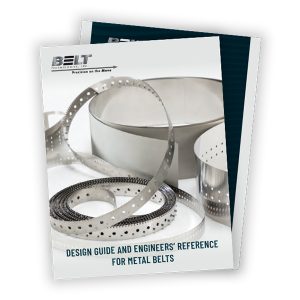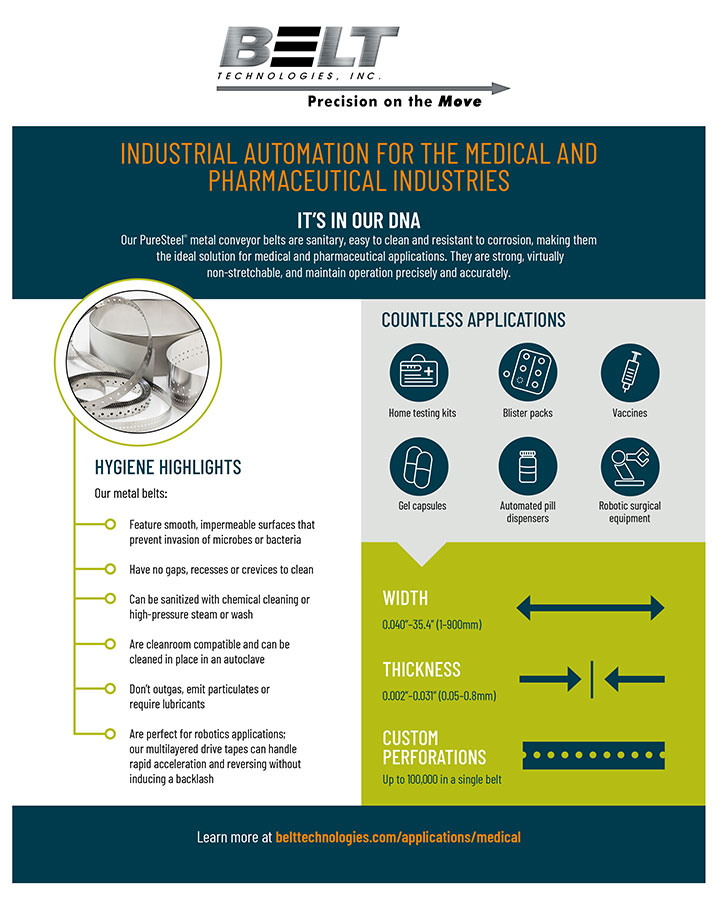PULLEY AXIS ADJUSTMENT: Adjusting the pulley axis in a metal belt system is the most effective way of tracking a metal belt. Belt edge tensions are changed in a controlled manner, thus steering the belt. The technique is also applicable to both flat-faced and crowned pulleys. Ideally, both the drive and idler pulleys would have adjustable axes. In reality, however, the idler is the only adjustable pulley. The drive pulley is usually difficult to adjust due to its interface with motors or other power transmission devices.
CROWNING FRICTION DRIVE PULLEYS: When crowned friction drive pulleys must be used, it is in conjunction with—not in place of—axis adjustment. This is because crowned pulleys will not self-center a metal belt. Crowned pulleys work best on thin belts, as the belt web must conform to the crowned face of the pulley. While increased tension can be used to achieve belt-to-pulley face conformity, tension cannot be so high as to cause permanent belt deformation. The optimal geometry for a crowned friction drive pulley is a full radius, with a chord height no greater than the thickness of the belt that is running on the pulley.
FORCED TRACKING: In cases where simple axis adjustment cannot completely eliminate improper tracking, forced tracking methods such as cam followers or glass-filled Teflon® flanges may be necessary and acceptable. System design relationships may need to change; this may involve the use of a thicker belt than might be otherwise recommended, since forced tracking techniques can contribute to a decrease in expected belt life.
An alternative forced tracking technique for wider belts employs a V-belt bonded to the inner circumference of the metal belt. This two-element belt, which Belt Technologies calls Metrak©, distributes tracking stresses on the V-belt rather than on the metal belt, thus maximizing belt life in a forced tracking system.



